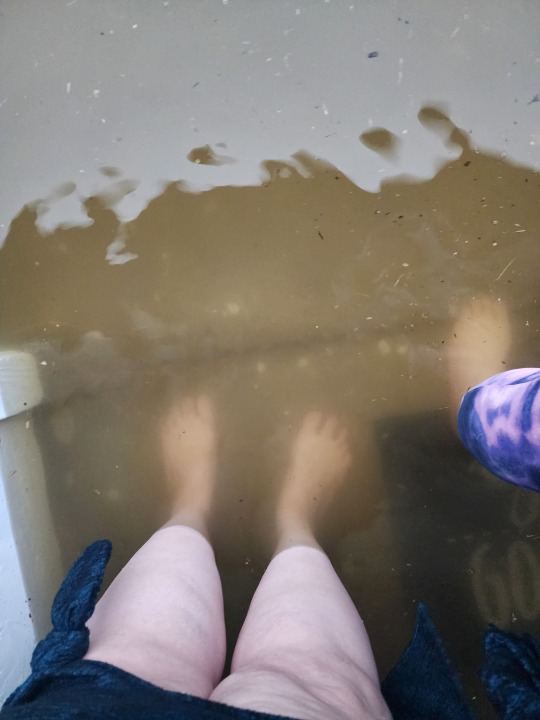#Deridder
Text

Lake Court Drive, Deridder, Louisiana.
248 notes
·
View notes
Text
Sorry for not being on today. Uh... we had a bad flood. It's been a rough day and we lost a good bit. Compounded with my current lack of a job, I am tired.




11 notes
·
View notes
Text
House Cleaning | Distracting Skinheads
File:A youth gang in Joensuu’s Penttilä in the 1990s (JOKAJUK2D K-4).tif
Dream 1
All that I can remember of this dream is that at some point I was somewhere, and my female coworker MR was there too.
Later in the dream during late afternoon or early evening, I went to a slightly fictional version of The E House to help clean it up.
There was a lot of furniture and stuff still inside.
Continue…

View On WordPress
0 notes
Text

DeRidder Soccer 🥅 Soccer ⚽️ Goalie #13; 👩🎓 Graduated in 2005. Thinking about what impact I have made through my 🪖🤎🇧🇪 Thirty Six Years old life. Seven days till my birthday; I won’t continue to let people hurt me.
0 notes
Text
Y'all. Can we NOT.

8 notes
·
View notes
Text
Cockroach Control Measures
Cockroach control is one of the most difficult nuisance control issues. Cockroach Control in Louisiana recommends an exhaustive arrangement for successful cockroach control.
Preventive Measures:
1. No greeting
a) Cockroaches will generally enter any home through any type of baggage. Consequently, it's exceptionally urgent to analyze your gear while unloading or pressing.
b) Watch for cockroaches and their egg cases, particularly if the gear you carry the baggage from areas pervaded with cockroaches. Eliminate and obliterate any such containers you find. The cases are dull in variety and seem to be dry kidney beans.
c) It is simpler to manage a little populace of cockroaches than to permit them to become abundant.
2. Neatness is close to righteousness
Cleanliness is vital to decrease cockroach pervasion. Further developing sterilization diminishes the possibilities of invasion.
a) forget about no food overnight. It is possible that you can keep it in the ice chest or hermetically sealed compartments.
b) Wash filthy vessels before dozing.
c) Clean counters, sinks, and tables with sudsy water.
d) Guarantee there are no food garbage on the floor, close to the hole, and ledges.
e) Guarantee the trash is put shut holder and cleaned day to day.
f) Guarantee there is no water spillage.
g) Eliminate any wellspring of dampness from the house.
3. Mess-free
Wiping out mess keeps cockroaches from residing and recreating in your home. Leave space between the bundles while putting away them.
4. Target Home
Distinguishing the wellspring of pervasion is exceptionally urgent for destruction. Cockroaches like tight, dim spots like breaks in the walls or corners of the restroom and waste regions. Via fixing off such places, it empowers us to dispose of them.
Cockroach Management
1. Actual evacuation.
Vacuuming is compelling in eliminating a huge number of cockroaches and egg cases. It very well may be more successful when joined with other methods.
2. Cold Treatment
In the event that little things like toaster ovens, tickers, or boxes are pervaded, put the thing in a Ziploc pack. Close the sack and put it in a cooler. Leave it for a few days and afterward clean it well.
3. Insect poisons Treatment
Place the tacky snares in various areas, particularly in regions where cockroaches have been located. There are a few choices for insect poison treatment of cockroaches like draws, dust (powders), and showers (fluid or aerosol). Treating cockroaches can challenge.
It's ideal to call experienced Irritation Control Administrations like "J & J Exterminating Co" a reputed Alexandria pest control agency in LA as they have the fundamental experience and apparatuses for a successful disposal. Be that as it may, further developing disinfection and decreasing harborage regions is vital in cockroach control.
#termite and pest control#Tyler Pest Control#alexandria pest control#Termite and Pest Control Alexandria LA#Termite and Pest Control DeRidder Louisiana
0 notes
Text

DEVIL MONKEYS- VIRGINIA
Though South America, Central America and southern Mexico have a great diversity of primates, northern North America has none aside from humans. This is ironic given that the earliest known primate- a small, squirrel-like creature called Purgatorius- evolved on this continent. Descendants of Purgatorius and its relatives diversified into several lineages of tarsier- and lemur-like forms that inhabited North America during the warm Eocene epoch before supposedly dying out as the land grew cooler and grasslands became more abundant.
A fossil find in 1960s altered this view when molars from a lemur-like creature dubbed Ekgmowechasala (Sioux for “Little Cat Man”) were unearthed on the Pine Ridge Indian Reservation in South Dakota. This animal lived in the Oligocene, millions of years after other primates were thought to have died out, proving that at least a few of these lines had continued. Though no younger North American primate fossils have been found since, what if descendants of Ekgmowechasala survived into the present day?
In 1959 a couple by the name of Boyd were driving home near Saltville, Virginia when a strange, monkey-like beast attacked their car. They described it as having light “taffy-colored” fur with a white belly, and powerful, muscular legs. Other people in the Saltville area reported seeing a similar creature around the same time.
Then in the 1990s a woman driving on a dark Virginia backroad saw a creature run in front of her car that she described as black and sleek with a long tail, pointy ears, a short-snouted face, a man-like torso, and powerful hind legs. Though the earlier Boyd cryptid bears little resemblance to this animal- and may in fact have been a different species- both incidents have been conflated in pop culture as encounters with what have come to be called devil monkeys.
While the Virginia encounters are the most well-known sightings, devil monkeys have been seen throughout North America. Coweta County, Georgia, for example, is haunted by the Belt Road Booger, a simian creature with a “flat, beaver-like tail covered in hair”. Run-ins with the Booger began in the 1970s, many of them now believed to have been hoaxes by pranksters dressed in gorilla costumes. But other encounters have not yet been fully explained. The Belt Road Booger has become such a local sensation that a taxidermist in Newnan, Georgia even made a fake “Booger” head out of a white-tailed deer’s posterior as a decoration for a friend’s hardware store.
There is also possible photographic evidence of a devil monkey. In 1996 photos surfaced online of a strange, furry, baboon-like carcass lying along the curb of a Louisiana highway. Dubbed the Deridder Roadkill, the body bears a distinct resemblance to descriptions of these cryptids with its long snout, bushy-haired body, and ape-like feet. While some have suggested the carcass was a devil monkey, others have proposed that it could be a rougarou, dogman, or even a chupacabra. More mundane suggestions include a large Pomeranian dog, or even a prop. However, as so often happens in these cases, the body disappeared before samples could be taken, so its identity could not be proved definitively.
Devil monkeys are often said to have powerful kangaroo-like hind legs that allow them to jump huge distances. This feature has led some cryptozoologists to wonder if widely reported “phantom kangaroos” sighted throughout the US and Canada might actually be these animals.
While stories of large non-human North American primates like sasquatch and skunk apes are abundant in folklore and cryptozoology, no fossil evidence for these creatures has been found. Thus if they are real, one could argue that they likely migrated to this continent late in geological history along the same routes that humans used. Devil monkeys, on the other hand, may represent a species of home-grown North American primate possibly descended from Ekgmowechasala or similar animals.
REFERENCES
Eons. (20, November 12). What happened to primates in North America? [Video]. PBS.org. https://www.pbs.org/video/the-first-and-last-north-american-primates-dztigm/#:~:text=Why%20don't%20we%20have,and%20eventually%20they%20all%20disappeared.
Gilly, Steve. (2018, April 20). The Devil Monkey. MountainLore. https://mountainlore.net/2018/04/20/the-devil-monkey/
Grundhauser, Eric. (2016, December 22). Does America have a secret kangaroo population? Atlas Obscura. https://www.atlasobscura.com/articles/does-america-have-a-secret-kangaroo-population
Leftwich, Rebecca. (2023, October 30). Who put the “boo” in the Belt Road Booger? The Newnan Times-Herald. https://www.times-herald.com/news/who-put-the-boo-in-the-belt-road-booger/article_ee9d689e-770f-11ee-a003-8bb851ca9cb4.html
Lynch, Brendan M. (2023, November 6). Fossils tell tale of last primate to inhabit North America before humans. University of Kansas. https://news.ku.edu/2023/11/06/fossil-evidence-tells-tale-last-primate-inhabit-north-america-humans#:~:text=The%20first%20primates%20came%20to,about%2034%20million%20years%20ago.
Morphy, Rob. (2010, January 13). Deridder Roadkill: (Louisiana, USA). Cryptopia. https://www.cryptopia.us/site/2010/01/deridder-roadkill-louisiana-usa/
Morphy, Rob. (2010, December 6). Devil monkeys: (North America). Cryptopia. https://www.cryptopia.us/site/2010/12/devil-monkeys-north-america/
Spooky Appalachia. (2023, April 26). The story of the Virginia devil monkey. [Video]. YouTube. https://www.youtube.com/watch?v=Nsv-mBSEX74
Taylor, Jr. L. B. (2012). Monsters of Virginia. Stackpole Books.
33 notes
·
View notes
Text

Beauregard Parish Jail
Beauregard Parish Jail also known as the Gothic Jail or Hanging Jail in DeRidder, Louisiana. The Beauregard Parish Police Jury purchased land for a new courthouse and jail. Stevens-Nelson designed the buildings while Falls City Construction Company was awarded the contract to build them in September 1913. Both were completed in 1915.
The building did not only have an unique design but it also contains a toilet, shower, lavatory, window in each cell and a spiral staircase. The jail could hold over 50 prisoners at a time. There was a jailers’ quarters on the bottom floor with a kitchen and a tunnel leading from the courthouse to the jail to transport prisoners for trial.
The jail received it’s nickname after a double execution by hanging in 1928. Joe Genna and Molton Brasseaux murdered a taxi cab driver named J. J. Brevelle while he was taking them to the John Miller place on August 28, 1926. They wanted money and had planned to hi-jack Brevelle. Genna and Brasseaux hit him 15 times, stabbed him with a screwdriver and cut his throat before dumping his body off a bridge. Then took the money and taxi and attempted to escape, but was arrested a few days later. Genna and Brasseaux were found guilty and hanged on March 9th. It was the first time DeRidder had seen an execution. The jail was closed to inmates in 1984. It’s currently not in use, but funding is being sought to save it and the building is being considered as a location for an upcoming Disney film.
It is believed that spirits of the two inmates hanged in the jail haunt the building. Former police and inmates have witnessed figures throughout the building. Witnesses have heard footsteps, and running water. There are reports of smelling pipe smoke.
#Beauregard Parish Jail#haunted jails#ghost and hauntings#paranormal#ghost and spirits#haunted locations#haunted salem#myhauntedsalem
14 notes
·
View notes
Photo

It may not seem like movie stuff gets made right here in DeRidder Louisiana, but it does. Here is a boatload of knives for the set lighting crew on a moving coming out by Netflix in 2024. It is a sci-fi movie called The Electric State. Kershaw-Knives.net #1660ckt #kershawknives #kershawleek #knives #laserengraving (at Kershaw-Knives.net) https://www.instagram.com/p/CoYCvgzPspc/?igshid=NGJjMDIxMWI=
2 notes
·
View notes
Text
A closed-loop drug-delivery system could improve chemotherapy
New Post has been published on https://sunalei.org/news/a-closed-loop-drug-delivery-system-could-improve-chemotherapy/
A closed-loop drug-delivery system could improve chemotherapy
When cancer patients undergo chemotherapy, the dose of most drugs is calculated based on the patient’s body surface area. This is estimated by plugging the patient’s height and weight into an equation, dating to 1916, that was formulated from data on just nine patients.
This simplistic dosing doesn’t take into account other factors and can lead to patients receiving either too much or too little of a drug. As a result, some patients likely experience avoidable toxicity or insufficient benefit from the chemotherapy they receive.
To make chemotherapy dosing more accurate, MIT engineers have come up with an alternative approach that can enable the dose to be personalized to the patient. Their system measures how much drug is in the patient’s system, and these measurements are fed into a controller that can adjust the infusion rate accordingly.
Play video
This approach could help to compensate for differences in drug pharmacokinetics caused by body composition, genetic makeup, chemotherapy-induced toxicity of the organs that metabolize the drugs, interactions with other medications being taken and foods consumed, and circadian fluctuations in the enzymes responsible for breaking down chemotherapy drugs, the researchers say.
“Recognizing the advances in our understanding of how drugs are metabolized, and applying engineering tools to facilitate personalized dosing, we believe, can help transform the safety and efficacy of many drugs,” says Giovanni Traverso, an associate professor of mechanical engineering at MIT, a gastroenterologist at Brigham and Women’s Hospital, and the senior author of the study.
Louis DeRidder, an MIT graduate student, is the lead author of the paper, which appears today in the journal Med.
Continuous monitoring
In this study, the researchers focused on a drug called 5-fluorouracil, which is used to treat colorectal cancers, among others. The drug is typically infused over a 46-hour period, and the dosage is determined using a formula based on the patient’s height and weight, which gives the estimated body surface area.
However, that approach doesn’t account for differences in body composition that can affect how the drug spreads through the body, or genetic variations that influence how it is metabolized. Those differences can lead to harmful side effects, if too much drug is present. If not enough drug is circulating, it may not kill the tumor as expected.
“People with the same body surface area could have very different heights and weights, could have very different muscle masses or genetics, but as long as the height and the weight plugged into this equation give the same body surface area, their dose is identical,” says DeRidder, a PhD candidate in the Medical Engineering and Medical Physics program within the Harvard-MIT Program in Health Sciences and Technology.
Another factor that can alter the amount of drug in the bloodstream at any given time is circadian fluctuations of an enzyme called dihydropyrimidine dehydrogenase (DPD), which breaks down 5-fluorouracil. DPD’s expression, like many other enzymes in the body, is regulated on a circadian rhythm. Thus, the degradation of 5-FU by DPD is not constant but changes according to the time of the day. These circadian rhythms can lead to tenfold fluctuations in the amount of 5-fluorouracil in a patient’s bloodstream over the course of an infusion.
“Using body surface area to calculate a chemotherapy dose, we know that two people can have profoundly different toxicity from 5-fluorouracil chemotherapy. Looking at one patient, they can have cycles of treatment with minimal toxicity and then have a cycle with miserable toxicity. Something changed in how that patient metabolized chemo from one cycle to the next. Our antiquated dosing fails to capture that change, and patients suffer as a result,” says Douglas Rubinson, a clinical oncologist at Dana-Farber Cancer Institute and an author of the paper.
One way to try to counteract the variability in chemotherapy pharmacokinetics is a strategy called therapeutic drug monitoring, in which the patient gives a blood sample at the end of one treatment cycle. After this sample is analyzed for the drug concentration, the dosage can be adjusted, if needed, at the beginning of the next cycle (usually two weeks later for 5-fluorouracil). This approach has been shown to result in better outcomes for patients, but it is not widely used for chemotherapies such as 5-fluorouracil.
The MIT researchers wanted to develop a similar type of monitoring, but in a manner that is automated and enables real-time drug personalization, which could result in better outcomes for patients. In their “closed-loop” system, drug concentrations can be continually monitored, and that information is used to automatically adjust the infusion rate of the chemotherapy drug and keep the dose within the target range. Such a closed-loop system enables personalization of the drug dose in a manner that considers circadian rhythm changes in the levels of drug-metabolizing enzymes, as well as any changes in the patient’s pharmacokinetics since their last treatment, such as chemotherapy-induced toxicity of the organs that metabolize the drugs.
The new system they designed, known as CLAUDIA (Closed-Loop AUtomated Drug Infusion regulAtor), makes use of commercially available equipment for each step. Blood samples are taken every five minutes and rapidly prepared for analysis. The concentration of 5-fluorouracil in the blood is measured and compared to the target range. The difference between the target and measured concentration is input to a control algorithm, which then adjusts the infusion rate if necessary, to keep the dose within the range of concentrations between which the drug is effective and nontoxic.
“What we’ve developed is a system where you can constantly measure the concentration of drug and adjust the infusion rate accordingly, to keep the drug concentration within the therapeutic window,” DeRidder says.
Rapid adjustment
In tests in animals, the researchers found that using CLAUDIA, they could keep the amount of drug circulating in the body within the target range around 45 percent of the time. Drug levels in animals that received chemotherapy without CLAUDIA remained in the target range only 13 percent of the time, on average. In this study, the researchers did not do any tests of the effectiveness of the drug levels, but keeping the concentration within the target window is believed to lead to better outcomes and less toxicity.
CLAUDIA was also able to keep the dose of 5-fluorouracil within the target range even when the researchers administered a drug that inhibits the DPD enzyme. In animals that received this inhibitor without continuous monitoring and adjustment, levels of 5-fluorouracil increased by up to eightfold.
For this demonstration, the researchers manually performed each step of the process, using off-the-shelf equipment, but they now plan to work on automating each step so that the monitoring and dose adjustment can be done without any human intervention.
To measure drug concentrations, the researchers used high-performance liquid chromatography mass spectroscopy (HPLC-MS), a technique that could be adapted to detect nearly any type of drug.
“We foresee a future where we’re able to use CLAUDIA for any drug that has the right pharmacokinetic properties and is detectable with HPLC-MS, thereby enabling the personalization of dosing for many different drugs,” DeRidder says.
The research was funded by the National Science Foundation Graduate Research Fellowship Program, a MathWorks Fellowship, MIT’s Karl van Tassel Career Development Professorship, the MIT Department of Mechanical Engineering, and the Bridge Project, a partnership between the Koch Institute for Integrative Cancer Research at MIT and the Dana-Farber/Harvard Cancer Center.
Other authors of the paper include Kyle A. Hare, Aaron Lopes, Josh Jenkins, Nina Fitzgerald, Emmeline MacPherson, Niora Fabian, Josh Morimoto, Jacqueline N. Chu, Ameya R. Kirtane, Wiam Madani, Keiko Ishida, Johannes L. P. Kuosmanen, Naomi Zecharias, Christopher M. Colangelo, Hen-Wei Huang, Makaya Chilekwa, Nikhil B. Lal, Shriya S. Srinivasan, Alison M Hayward, Brian M. Wolpin, David Trumper, Troy Quast, and Robert Langer.
0 notes
Text
A closed-loop drug-delivery system could improve chemotherapy
New Post has been published on https://thedigitalinsider.com/a-closed-loop-drug-delivery-system-could-improve-chemotherapy/
A closed-loop drug-delivery system could improve chemotherapy
When cancer patients undergo chemotherapy, the dose of most drugs is calculated based on the patient’s body surface area. This is estimated by plugging the patient’s height and weight into an equation, dating to 1916, that was formulated from data on just nine patients.
This simplistic dosing doesn’t take into account other factors and can lead to patients receiving either too much or too little of a drug. As a result, some patients likely experience avoidable toxicity or insufficient benefit from the chemotherapy they receive.
To make chemotherapy dosing more accurate, MIT engineers have come up with an alternative approach that can enable the dose to be personalized to the patient. Their system measures how much drug is in the patient’s system, and these measurements are fed into a controller that can adjust the infusion rate accordingly.
Play video
This approach could help to compensate for differences in drug pharmacokinetics caused by body composition, genetic makeup, chemotherapy-induced toxicity of the organs that metabolize the drugs, interactions with other medications being taken and foods consumed, and circadian fluctuations in the enzymes responsible for breaking down chemotherapy drugs, the researchers say.
“Recognizing the advances in our understanding of how drugs are metabolized, and applying engineering tools to facilitate personalized dosing, we believe, can help transform the safety and efficacy of many drugs,” says Giovanni Traverso, an associate professor of mechanical engineering at MIT, a gastroenterologist at Brigham and Women’s Hospital, and the senior author of the study.
Louis DeRidder, an MIT graduate student, is the lead author of the paper, which appears today in the journal Med.
Continuous monitoring
In this study, the researchers focused on a drug called 5-fluorouracil, which is used to treat colorectal cancers, among others. The drug is typically infused over a 46-hour period, and the dosage is determined using a formula based on the patient’s height and weight, which gives the estimated body surface area.
However, that approach doesn’t account for differences in body composition that can affect how the drug spreads through the body, or genetic variations that influence how it is metabolized. Those differences can lead to harmful side effects, if too much drug is present. If not enough drug is circulating, it may not kill the tumor as expected.
“People with the same body surface area could have very different heights and weights, could have very different muscle masses or genetics, but as long as the height and the weight plugged into this equation give the same body surface area, their dose is identical,” says DeRidder, a PhD candidate in the Medical Engineering and Medical Physics program within the Harvard-MIT Program in Health Sciences and Technology.
Another factor that can alter the amount of drug in the bloodstream at any given time is circadian fluctuations of an enzyme called dihydropyrimidine dehydrogenase (DPD), which breaks down 5-fluorouracil. DPD’s expression, like many other enzymes in the body, is regulated on a circadian rhythm. Thus, the degradation of 5-FU by DPD is not constant but changes according to the time of the day. These circadian rhythms can lead to tenfold fluctuations in the amount of 5-fluorouracil in a patient’s bloodstream over the course of an infusion.
“Using body surface area to calculate a chemotherapy dose, we know that two people can have profoundly different toxicity from 5-fluorouracil chemotherapy. Looking at one patient, they can have cycles of treatment with minimal toxicity and then have a cycle with miserable toxicity. Something changed in how that patient metabolized chemo from one cycle to the next. Our antiquated dosing fails to capture that change, and patients suffer as a result,” says Douglas Rubinson, a clinical oncologist at Dana-Farber Cancer Institute and an author of the paper.
One way to try to counteract the variability in chemotherapy pharmacokinetics is a strategy called therapeutic drug monitoring, in which the patient gives a blood sample at the end of one treatment cycle. After this sample is analyzed for the drug concentration, the dosage can be adjusted, if needed, at the beginning of the next cycle (usually two weeks later for 5-fluorouracil). This approach has been shown to result in better outcomes for patients, but it is not widely used for chemotherapies such as 5-fluorouracil.
The MIT researchers wanted to develop a similar type of monitoring, but in a manner that is automated and enables real-time drug personalization, which could result in better outcomes for patients. In their “closed-loop” system, drug concentrations can be continually monitored, and that information is used to automatically adjust the infusion rate of the chemotherapy drug and keep the dose within the target range. Such a closed-loop system enables personalization of the drug dose in a manner that considers circadian rhythm changes in the levels of drug-metabolizing enzymes, as well as any changes in the patient’s pharmacokinetics since their last treatment, such as chemotherapy-induced toxicity of the organs that metabolize the drugs.
The new system they designed, known as CLAUDIA (Closed-Loop AUtomated Drug Infusion regulAtor), makes use of commercially available equipment for each step. Blood samples are taken every five minutes and rapidly prepared for analysis. The concentration of 5-fluorouracil in the blood is measured and compared to the target range. The difference between the target and measured concentration is input to a control algorithm, which then adjusts the infusion rate if necessary, to keep the dose within the range of concentrations between which the drug is effective and nontoxic.
“What we’ve developed is a system where you can constantly measure the concentration of drug and adjust the infusion rate accordingly, to keep the drug concentration within the therapeutic window,” DeRidder says.
Rapid adjustment
In tests in animals, the researchers found that using CLAUDIA, they could keep the amount of drug circulating in the body within the target range around 45 percent of the time. Drug levels in animals that received chemotherapy without CLAUDIA remained in the target range only 13 percent of the time, on average. In this study, the researchers did not do any tests of the effectiveness of the drug levels, but keeping the concentration within the target window is believed to lead to better outcomes and less toxicity.
CLAUDIA was also able to keep the dose of 5-fluorouracil within the target range even when the researchers administered a drug that inhibits the DPD enzyme. In animals that received this inhibitor without continuous monitoring and adjustment, levels of 5-fluorouracil increased by up to eightfold.
For this demonstration, the researchers manually performed each step of the process, using off-the-shelf equipment, but they now plan to work on automating each step so that the monitoring and dose adjustment can be done without any human intervention.
To measure drug concentrations, the researchers used high-performance liquid chromatography mass spectroscopy (HPLC-MS), a technique that could be adapted to detect nearly any type of drug.
“We foresee a future where we’re able to use CLAUDIA for any drug that has the right pharmacokinetic properties and is detectable with HPLC-MS, thereby enabling the personalization of dosing for many different drugs,” DeRidder says.
The research was funded by the National Science Foundation Graduate Research Fellowship Program, a MathWorks Fellowship, MIT’s Karl van Tassel Career Development Professorship, the MIT Department of Mechanical Engineering, and the Bridge Project, a partnership between the Koch Institute for Integrative Cancer Research at MIT and the Dana-Farber/Harvard Cancer Center.
Other authors of the paper include Kyle A. Hare, Aaron Lopes, Josh Jenkins, Nina Fitzgerald, Emmeline MacPherson, Niora Fabian, Josh Morimoto, Jacqueline N. Chu, Ameya R. Kirtane, Wiam Madani, Keiko Ishida, Johannes L. P. Kuosmanen, Naomi Zecharias, Christopher M. Colangelo, Hen-Wei Huang, Makaya Chilekwa, Nikhil B. Lal, Shriya S. Srinivasan, Alison M Hayward, Brian M. Wolpin, David Trumper, Troy Quast, and Robert Langer.
#algorithm#Analysis#Animals#approach#blood#bloodstream#bridge#Cancer#Capture#career#career development#change#chemotherapy#circadian rhythm#Composition#continuous#course#data#dating#development#Difference Between#drug#drug delivery#drugs#effects#engineering#engineers#enzyme#enzymes#equipment
0 notes
Text

EXQUISITEMAD Airstream Polishing provided on site at your location, from Panama city beach, destin, 30a, sandestin, Miramar beach, fort Walton, Navarre, gulf breeze, Pensacola, gulf shores, orange beach, point clear, fairhope, daphne, Spanish fort, mobile, foley, west mobile, ocean springs, Pascagoula, Birmingham, Montgomery, Huntsville, Muscle Shoals, Crestview, Crystal River, Orlando, Jacksonville, Ft Myers, West Palm Beach, Miami, Tampa, Shreveport, Alexandria, Deridder, Hattiesburg, Jackson MS, Gulfport, new Orleans, lakefront, Slidell, Pensacola Lafayette, Baton Rouge, and surrounding areas
0 notes
Text
Trying To Make A Food Donation For The Library
File:Roasted pig served at a summer wedding in the US.jpg
I probably turned off my alarm and I went back to sleep, I currently do not have a secondary alarm set since my new work hours started, so I overslept.
In this dream I was at work, later when I woke up in the real world to see the real time, it was a surprise, and I had to rush to get ready for work.
So I was 38 minutes late for work…

View On WordPress
#Cart#Corn Dog#Coworker#DeRidder#Donation#Food#Hot Dog#Library#Pig#Pork#Security#Shopping Mall#Wheelbarrow#Work
0 notes
Link
#belmontcounty#BrookeCounty#downtown#downtownwheeling#ECHL#MarshallCounty#ohiocounty#UpperOhioValley#WesbancoArena
0 notes
Text
Interview about Tanith Lee
I spoke with Julia DeRidder about the influence Tanith Lee has had upon my fiction. You can watch it below! This is part of the build up for the Tanith Lee Kickstarter that will fund a tribute anthology called Storyteller.
youtube
View On WordPress
0 notes
